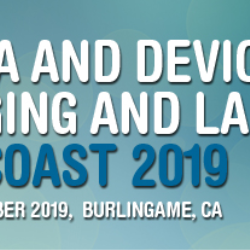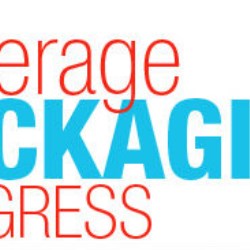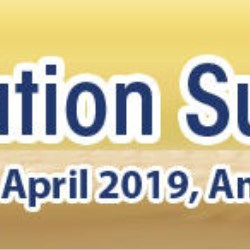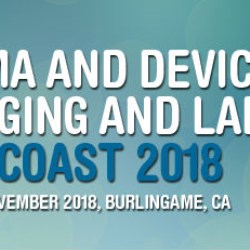Public
Arena International Blog/Forum
Arena International Events
Arena International Locations
Arena International News
Subsidiaries
Future Retail Strategies
Innovation in Non-Alcoholic Beverages
Pharma and Device Packaging and Labelling
If this is your company, CONTACT US to activate Packbase™ software to build your portal.


Leading representatives from the pharmaceutical and medical device industries will meet in Berlin to discuss the biggest challenges and regulatory issues within their packaging and labelling processes. With case-study led presentations from across the EU and further afield, the event on Wednesday 9th September will provide a unique opportunity for attendees to optimize their serialization strategies, discuss the latest updates in regulation and implement effective readability processes.
The programme on Wednesday 9th September has been organized to include a variety of discussions, presentations and case studies.
8.00-8.50 Registration and refreshments
8:50-9:00 Chair's opening remarks
9:00-9:30 Keynote: Creating an effective strategy for tamper evidence to outsmart counterfeiters
Stephane Guillet, Packaging Director - Merck Serono S.A.
- Presenting key needs of your product in line with the counterfeiters to realize the basic needs of your anti-counterfeiting
- Establishing goals for an effectual approach to tamper evidence packaging which meets the needs of your product
- Developing an effective strategy in line with your product that allows for a level of flexibility
- Ascertaining methods of counterfeiters to safeguard your product against future counterfeit advances
- Appreciating need for forward planning to produce optimal defence from counterfeit products
9:30-10:00 Case Study: Exploring challenges in Orion’s tamper evidence strategy to define alternative approaches
Hanna Bruun, Specialist, Packaging designer, Packaging development, Orion Oyj
- Establishing need for tamper evidence at Orion Oyj to ensure greatest resistance to counterfeiters
- Surveying actions taken in Orion’s packaging to minimise appearance of counterfeit products in the supply chain
- Describing challenges faced in tamper evidence approach to establish future opposition to counterfeiters
- Outlining lessons learned in tamper evidence to build greater defence against counterfeits
- Proposing future developments necessitated by evolving counterfeit approaches
10:00-10:30 (to be confirmed)
10:30-11:00 Morning refreshments and networking
11:00-11:45 Panel Discussion: Determining strategies for compliance with Falsified Medicines Directive to ensure smooth transition post-2017
Carolien van de Wal, Director Regulatory Affairs, Merck Sharp & Dohme
- Uncovering expectations for best approach in development and deployment for compliance with Falsified Medicines Directive in light of limited legislation and guidance
- Defining changes needed in implementation schemes to ensure compliance with Falsified Medicines Directive
- Finding logistical strategies for reorganizing labeling and setting up an appropriate IT system within the time available for an effective track-and-trace compliant approach
- Managing technical aspects of implementing a 2d matrix system in line with adapting other aspects of packaging and labeling to ensure whole company compliance
- Examining differences between EU-specific needs and those already implemented in other territories (Brazil, China, Korea) to ensure effective observance to Falsified Medicines Directive
11:45-12:15 After the Falsified Medicines Directive – Next Stop for the Counterfeiters
Jim Thomson, Director, European Alliance for Access to Safe Medicines
12:15-12:30 (to be confirmed)
12:30-14:00 Lunch and networking
14:00-14:30 Investigating track and trace strategies for non-EU countries to ensure consistency with varying regulations
Nada Adams, Serialisation Global Process Owner, GSK
- Highlighting current position of international markets and regulatory needs to recognize appropriate track and trace schemes for a newer and relatively unfamiliar markets
- Considering opportunities in larger, untapped markets for large batch sizes while recognising challenges associated with emerging regulatory bodies and norms
- Identifying tools for tracking regional compliance in unfamiliar markets to ensure methods meet expectations
- Appreciating differences in these markets for track and trace strategy to ensure IT systems are equipped for effective tracking
- Emphasising serialisation as a holistic approach throughout departments to ensure it is not considered in silo as a technical or packaging approach
14:30-15:00 Uncovering mass serialisation and track and trace in Turkey to realise the current strategy of Abdiibrahim
Izzet Senol, Electronic Maintenance Supervisor, Abdiibrahim
- Reviewing track & trace regulations in Turkey to recognise reimbursement and implementation strategy at Abdiibrahim
- Developing track & trace strategies which are in line with Turkish and European requirements to ensure straightforward access of products into other countries
- Presenting risk analysis undertaken and feedback received to justify future actions
- Identifying new functionalities related to transportation process and data management to ensure continued effective track & trace
15:00-15:30 Discussing Serialization implementation challenges at Global pharma companies
Géraldine Lissalde-Bonnet, Senior Manager Public Policy Healthcare, GS1 Global Office
15:30-16:00 (to be confirmed)
16:00-16:30 Afternoon refreshments and networking
16:30-17:00 Case Study: Defining and uncovering challenges in implementing UDI for medical devices using GS-1 bar coding to improve future performance
Jenny Gough, GS1 Specialist Supply Chain Development, Molnlycke Health Care
- Establishing goals and objectives for executing UDIs on your medical device
- Presenting common challenges experienced in reviewing a UDI execution to enhance future medical device track and trace approaches
- Identifying specific challenges in minimum size requirements needed for GS-1 bar coding and illustrating what this means for UDI and its effective implementation
- Evaluating ease of data management to ensure all information is correctly distributed throughout stakeholders
- Ensuring UDI is used effectively throughout the supply chain to ensure ease of product recall and to minimise patient errors
17:00-17:30 Case Study: Defining and uncovering challenges in implementing UDI for IVDs using GS-1 bar coding to improve future performance
Andrew Rutter, Senior Regulatory Affairs Associate, Ortho Clinical Diagnostics
- Establishing goals and objectives for executing UDIs on your IVD
- Presenting common challenges experienced in reviewing a UDI execution to enhance future IVD track and trace approaches
- Identifying specific challenges in minimum size requirements needed for GS-1 bar coding and illustrating what this means for UDI and its effective implementation
- Evaluating ease of data management to ensure all information is correctly distributed throughout stakeholders
- Ensuring UDI is used effectively throughout the supply chain to ensure ease of product recall and to minimise patient errors




















